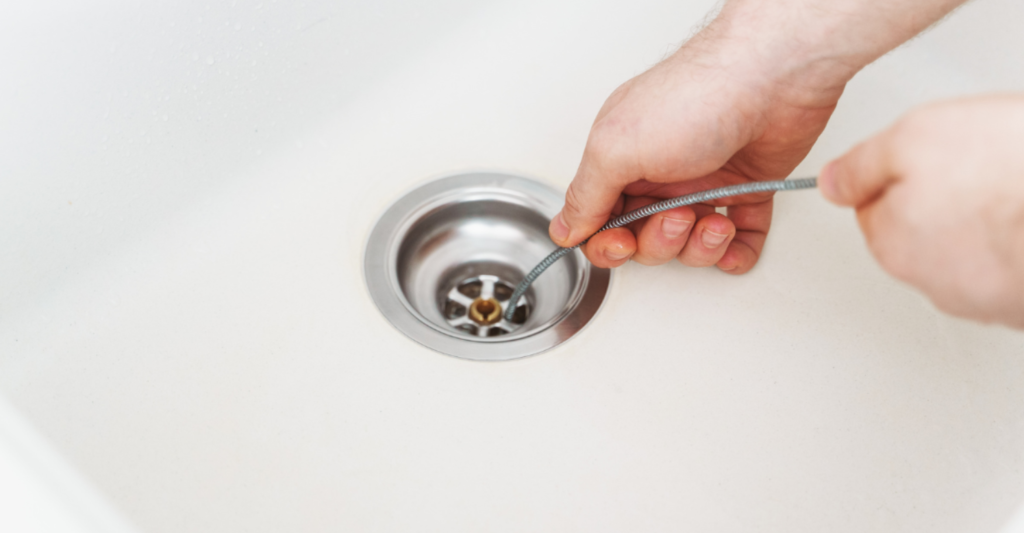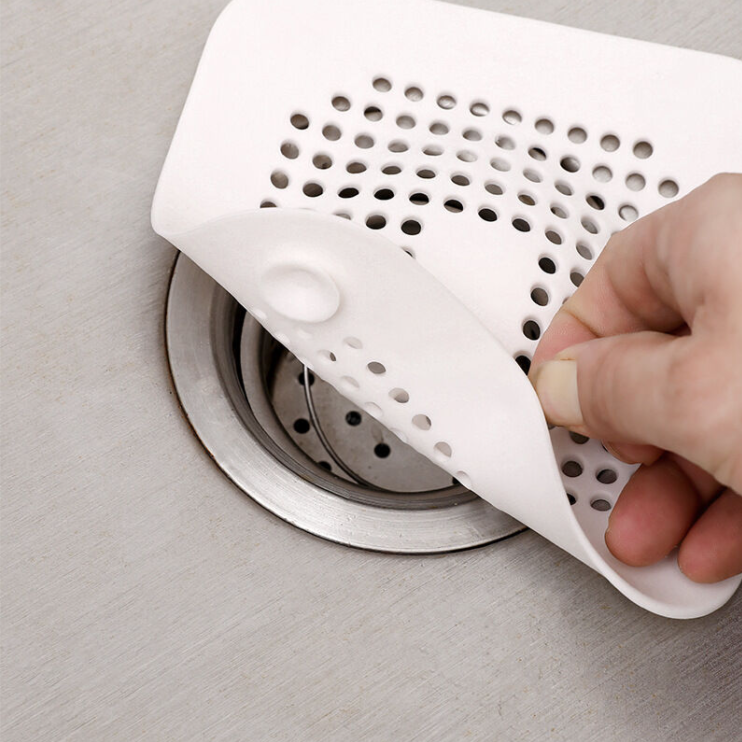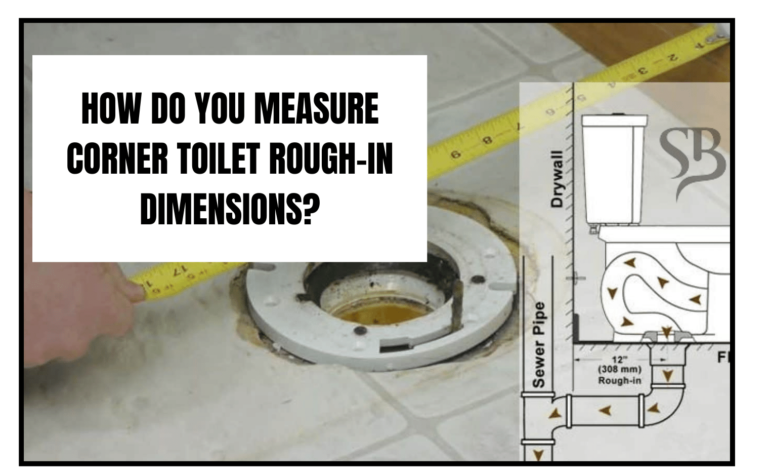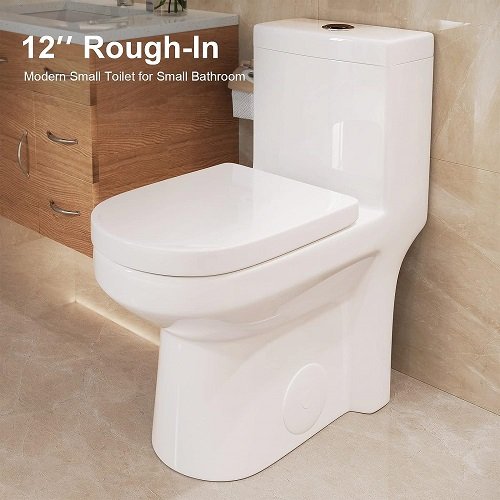A clogged or slow-draining bathroom sink can be annoying and inconvenient. Over time, hair, soap scum, toothpaste, and other debris can build up inside the drain pipe, gradually blocking water flow. But learning to fix a slow bathroom sink drain is life changing.
When your bathroom sink starts to drain slowly, it’s a sign that the drain is partially clogged and needs to be cleared. With simple tools and techniques, you can often unclog a bathroom sink drain instead of calling a plumber.
Assess the Drain
Start by turning on the faucet and observing how well the water drains. See if the water starts backing up in the sink or whether there is standing water that drains very slowly. Also, check if any gurgling sounds come from the drain.

These are signs that there is a clog or blockage inside the drain assembly. Next, use a small zip bag to cover the overflow holes and fill the sink with a few inches of water.
See if the water drains evenly or if one side seems blocked. Identifying where the clog exists helps guide your approach.
Observe if the water drains faster when the faucet is on versus when turned off. If so, that indicates the clog may be farther down the drain run.
Also, note if releasing the pop-up sink plug changes water drainage speed. Removing obstacles under the drain hole is worthwhile before moving on to other clog-clearing methods.
Also read: How to Prevent Hair Dye From Staining Your Bathtub
Try a Plunger
Often, a basic household plunger can do the trick for simple sink clogs. Fill the sink halfway with water, ensuring it covers the drain hole completely. Place a wet rag over the overflow hole to form a seal.
Position the plunger firmly over the drain and plunge up and down rhythmically 10-15 times. The suction can help dislodge debris inside the drain, like hair and soap buildup.

When plunging, try to pinpoint the exact location of the clog based on where bubbles emerge and aim the force of the plunger accordingly. Keep an eye out for any debris that may surface, as it often comes up with the first few plunges. Retrieve any hair or particles that appear so they don’t end up stuck in the drain again.
As you work the plunger, you’ll likely hear gurgling sounds in the pipe, indicating the clog is loosening and suction is occurring. After several minutes of vigorous plunging from multiple angles:
- Remove the plunger and rag and check if the water drains normally.
- Run hot water as well to help flush the pipes.
- If the sink still seems blocked, move on to other methods.
Also read: How to Hide a Plunger and Toilet Brush with Style
Use a Chemical Drain Cleaner
If plunging fails to open the clog, you can use a store-bought chemical drain cleaner containing active ingredients like lye or sulfuric acid. Wear protective gloves as you read and follow package directions closely.

Most cleaners require you to pour a small amount down the drain and let it sit for a specific period before flushing it with hot water. The chemicals help dissolve organic matter like soap scum, oils, and food debris to break down the blockage.
Opt for cleaners that use less caustic compounds versus harsh acids that can corrode pipes.
Safer ingredients include sodium hydroxide, potassium hydroxide, or calcium hypochlorite, which still cut through gunk without damaging plumbing as readily. Avoid products with concentrated acids like nitric or hydrochloric acid. This is sure to help you to fix a slow bathroom sink drain.
Also read: What is The Best Chemical to Clean a Bathroom?
Remove the P-Trap
The curved section of drain pipe under the sink is called the P-trap and is where clogs often occur because debris gets caught in the elbow of the bend.

Start by placing a bucket under the pipes to catch water. Loosen the slip-nuts with a wrench or by hand and disconnect drain pipes from the curved section. Have rags handy to catch any drips.
Slowly and carefully remove the horizontal piece of the P-trap over the bucket so the contents can drain out into the container for disposal.
Rinse and inspect the pipe for any stuck debris like hair or soap scum. Use a wire coat hanger or narrow drain snake to poke into the pipe opening to dislodge the obstruction gently.
Be mindful that there will be some dirty water spillage when removing and cleaning the P-trap, so keep towels handy for mopping up messes. Wear gloves during the process and possibly eyewear to protect from grimy water splashes.
Thoroughly rinse all pipe sections before reassembling the drain trap snugly without over tightening slip joints.
Also read: How to Clean White Film off Shower Tile: Solutions for a Sparkling Bathroom
Use a Drain Snake
Another tool that can help you fix a slow bathroom sink drain is drain snake. Also called an auger, this flexible metal cable with a rotating or spring-loaded head is inserted into the drain to hook onto and extract tough clogs.
Crank-style drain snakes are good for clearing blockages close to drain openings, whereas motor-powered drum models with longer cables can reach deeper into main drain lines.

Carefully insert the drain snake into the sink opening, either directly or through the disassembled P-trap first if removing it. Guide the snake head downward, aiming to follow the curve of the bend where clogs typically occur.
Crank the handle clockwise while gently pushing to break through the mass of hair and debris until you feel the hook penetrate and catch the obstruction.
Slowly crank in the opposite direction while pulling up to drag out the debris. When finished, run hot water to flush residue down the pipe.
Be cautious not to over-crank or forcefully twist the drain snake to avoid scratching enamel surfaces inside pipes. Always wear gloves and eye protection when operating this tool.
Also read: Why Does My Bathroom Sink Smells Like Sewer
Install a Hair Catcher
Install an inexpensive hair catcher strainer to stop strands of hair from going down the bathroom sink drain and causing future clogs. This tool helps you prevent clog in bathroom sink than to fix a slow bathroom sink drain but useful nonetheless.

Made from stainless steel mesh, nylon, or perforated metal, hair catchers sit in the drain hole to trap hair and particles before they wash away.
Look for catchers with very fine holes, securely sealed edges, and a shallow enough depth to lay flush across a standard sink drain without significantly restricting the water flow rate.
Clean the catcher regularly by simply lifting it out and throwing hair and debris in the trash. Routinely rinsing hair down the drain is a common cause of slow drainage. A strainer helps mitigate this.
Also read: How To Remove a Bathroom Sink Stopper
Use Preventative Measures
Along with sink strainers, there are some other easy ways to help keep bathroom sink drainage pipes clear long-term:
- Avoid pouring grease or harsh chemicals down the sink as these substances cling to pipes
- Dispose of hair collected in combs and brushes in the trash instead of the sink
- When washing hands or brushing teeth, always run plenty of hot water to wash away soap and toothpaste residue
- Consider “dry brushing” teeth over a tissue to cut down on spit and paste buildup
- Pour a boiling pot of water mixed with 1⁄2 cup baking soda and vinegar down the drain monthly to deodorize and keep water flowing freely
- Use baby oil to loosen soap scum or dried toothpaste stuck on sink basins, then wipe clean
- Install an enzymatic septic tank additive product like Rid-X monthly to eat away organism growth in the pipes
- Replace old metal piping and connectors with smoother plastic drainage parts if feasible
Also read: Why My Bathroom Smells Like Urine After Shower
Conclusion
Dealing with a slow drain is frustrating but often something you can tackle yourself using everyday items like plungers and wire hooks alongside commercial drain remedies.
Investing a little vigilance and effort into ongoing drain maintenance prevents minor clogs from morphing into major plumbing headaches.
Implement preventative steps like hair catchers and only washing responsible products down your bathroom sink. Be proactive in responding to sluggish drains immediately before they worsen over time.
Follow these drain cleaning tips, and with some patience, your bathroom sink will again be draining fast and free in no time.
Also read: Can I Paint My Bathroom Countertop: The DIY Magic of Painting Your Countertop
How do I prevent future clogs in my bathroom sink drain?
Install a hair catcher strainer, avoid pouring grease or harsh chemicals down the sink, run hot water regularly, and consider using preventative measures like a monthly baking soda and vinegar flush or enzymatic septic tank additives.
Are chemical drain cleaners safe to use?
Chemical drain cleaners can be used if plunging doesn’t work. Choose cleaners with safer ingredients like sodium hydroxide or potassium hydroxide, following package instructions closely. Avoid concentrated acids to prevent pipe damage.
Can I use a plunger to unclog my bathroom sink?
Yes, a basic household plunger can be effective. Fill the sink with water, cover the overflow hole, and plunge rhythmically to create suction, dislodging debris like hair and soap buildup.
How can I tell if my bathroom sink drain is clogged?
Look for signs such as slow drainage, standing water in the sink, gurgling sounds, or water backing up. These indicate a potential clog or blockage in the drain assembly.







